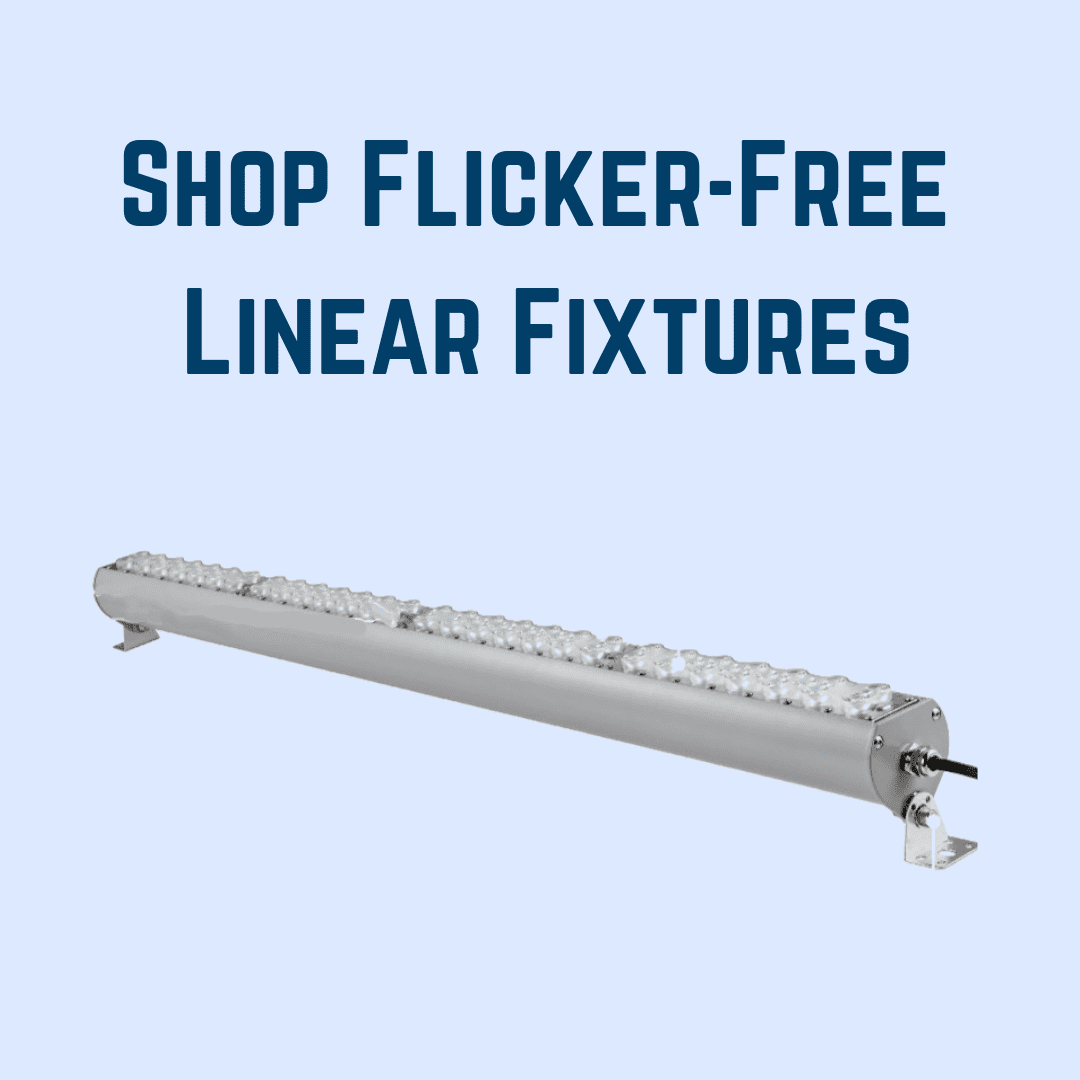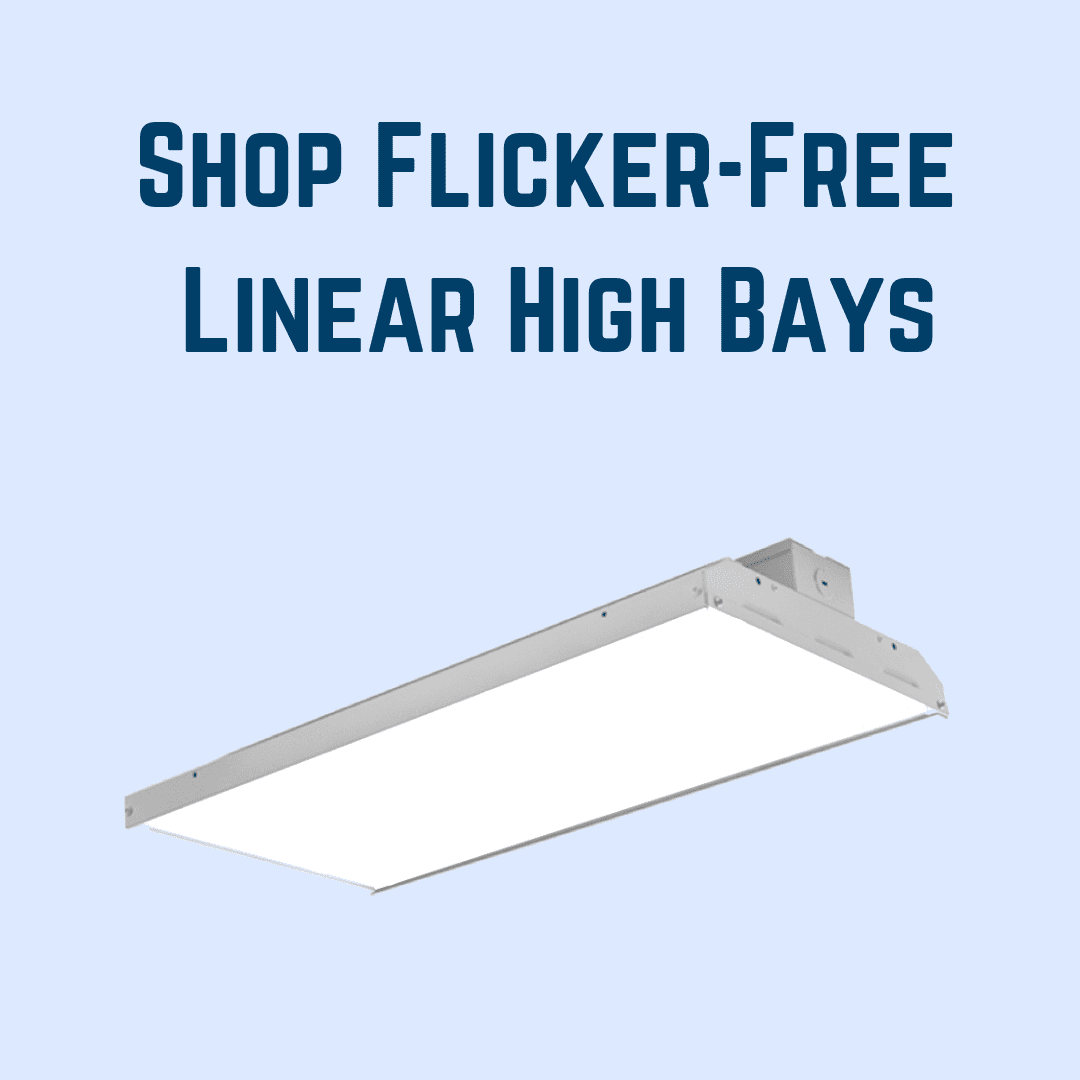LEDs have come to the forefront of the market in recent years; investing in LEDs not only saves you a lot of money but dramatically reduces the hassle of relamping and replacing units. With fluorescents gradually being replaced by LEDs, you may have thought the days of flickering lights were completely over. Though T8 LEDs are usually free of issues and flickering happens less often than with fluorescents, sometimes LEDs can blink, flicker, or even fail to turn on altogether. Generally, finding a solution to these issues is a relatively simple process. Read on for a few simple steps you should carry out to establish the root cause of flickering LED lights. We recommend that all the below steps be taken by qualified, registered electricians.
Key Takeaways
-
- Secure Connections: Ensure all wiring and switches are compatible and secure to prevent flickering.
- Use Quality Components: Invest in high-quality drivers and capacitors to avoid performance issues and flickering.
- Manage Heat and Conditions: Implement thermal management solutions and maintain optimal conditions to prolong LED lifespan and reduce flickering.
Step One – Identify Your Current Light Setup
The first step to identifying the problem is to evaluate your current setup. Check your lamps, wires, ballast/driver, and tombstones for bad connections or loose wires. A common reason for flickering T8 LEDs is a loose connection within the circuit. Addressing a power-connection issue or loose wire to the driver circuit will often easily resolve the flickering or no-power issue. Ensure the lamp is screwed correctly in place and the connection point hasn’t become loose over its lifetime.
- Check for loose wires.
- Tighten and securely screw lamp correctly in place.
- Ensure the connection point hasn’t become loose.
- If the wiring is loose at the connection point, disconnect power to the circuit and secure wiring as needed.
Step Two – Narrow Down Other Potential Points of Failure That Cause Flickering
If your wiring and connections are working, the issue may be resolved by checking for incompatible switches. Many new T8 LED lamps are incompatible with older dimmers and switches. There are a number of other potential points of failure resulting in flickering or power issues with your LED lamps, including:
- Incompatible switches
- Driver components
- Relaxation oscillator
- Incorrect power/surge wattage
- Changing voltage levels
Regarding Incompatible Switches
With the exponential advancement of LED technology, a lot of modern LEDs are not compatible with older switches we have known and used for years. Dimming switches cause the most issues because many of them are incompatible with modern LED technology. To test if your switches are causing the flickering in your LED bulbs, test your switches by replacing your bulb with a traditional incandescent bulb.
Most dimmers work via phase cutting, meaning voltage is reduced. While this is useful in many situations, an LED circuit has more difficulty with this process, resulting in an amplified flicker or lack of power on startup. If your application requires dimming, there are LED-specific dimming switches available. LEDs are almost always a worthwhile investment, so ensuring your current solution works in conjunction with this new technology is important. Evaluate your application and make the necessary changes required to ensure your LEDs run how they should.
Driver Components
In many cases, the flickering of a T8 LED can be related to the driver components within the lamp. By using a controlled output current to reduce the risk in altering frequency, T8 LED lamps are less likely to flicker. Constant-current drivers help avoid any peaks in the current wave, eliminating any flickering.
Relaxation Oscillator and Electronic Series Resistance
Cheap lamp components—such as a capacitors (they store energy), which are heat sensitive and often come with low rated lives—can affect the output of your lamp. Capacitors control the current supplied to the LED through a driver module. An equivalent series resistance (ESR) is a change in a lamp’s characteristics and performance caused by cheaper components, uncontrolled temperature, and frequency interruptions. Another electrical effect that can cause power issues and flickering of an LED lamp is known as a relaxation oscillator. A relaxation oscillator causes the capacitors inside an LED lamp to flip between their on and off cycles; a charging cycle when the lamp is powered off means the lamp should remain turned off but the relaxation oscillator effect causes temporary (i.e., nanoseconds-long) illumination, which the average person sees as a flicker.
Incorrect Power and Surge Wattage
When a lamp is first installed, it requires more power than if it had been running on a consistent basis for some time. This extra power can put a strain on the LED lamps and cause them to flicker, typically as a result of a drop or surge in power. To prevent this issue, it is recommended to move larger-load items to a high-volt circuit. This eliminates the pressure on the entire voltage load, thus eliminating the risk of flickering.
Changing Voltage Levels
Voltage levels change through the wiring of an application. Voltage flows through each wire, each of which uses a specific voltage level. A change in voltage level can be caused by multiple appliances being used at one time, causing peaks and dips in your voltage levels, and resulting in a flickering lamp. This is a common problem in many households due to the amount of appliances using a heavy power load. Check the current running to your home/office/space to ensure it provides adequate voltage levels to run everything you need when you need them.
Step Three – Address the Malfunctioning Light Component
When you have tested all components and narrowed it down to the malfunctioned component, speak to your manufacturer and explain the tests you’ve carried out. If your lamp is under warranty, your manufacturer should replace it. If the lamp is out of warranty, your manufacturer can help you find a replacement piece. Always have a qualified electrician switch out the components to ensure safety remains a top priority.
Step 4 – Replace the T8 LED Tubes or Purchase an LED Light Fixture
If you have carried out the above tests and your LED lamps are still flickering or not powering on, replacing your T8 LED lamps may be a more worthwhile, efficient option. Access Fixtures no longer offers T8 LED lamps for you to choose from, but we do offer LED fixture replacements such as the UPTA fixtures. UPTAs last for over 200,000 hours and are even more energy-efficient than T8 LED lamps. These fixtures are ideal for mechanic shops, retail locations, paint booths, artist studios, and anywhere that requires detail-oriented work. EPTA is also another flicker-free LED choice. EPTA is a linear fixture ideal for replacing T8 or T5 LEDs and is L70-rated at over 200,000 hours.
Additional Considerations to Mitigate Against Light Flickering
Heat Accumulation (Daytime Sunlight)
Excessive heat accumulation can negatively impact LED performance. During the day, sunlight can heat up the fixtures, leading to higher temperatures within the LED housing. This can cause the LEDs to overheat, resulting in reduced lifespan, increased flickering, and even total failure in extreme cases. Proper ventilation and heat management solutions, such as heat sinks or cooling systems, can mitigate these effects and ensure stable LED performance.
Cheap or Overdriven Components
Using cheap or overdriven components in LED fixtures can lead to various issues, including flickering. Overdriving refers to operating the LED at a higher current than it is rated for, which can increase brightness but also generate more heat and accelerate wear and tear. Cheap components, such as low-quality drivers or capacitors, can fail prematurely and cause inconsistent performance. Investing in high-quality components and ensuring they are used within their rated specifications can help prevent these problems.
L70 @ 25°C
The L70 rating indicates the time it takes for an LED light to diminish to 70% of its original brightness. This rating is typically given at a standard temperature of 25°C. When LEDs are operated in higher temperatures, their lifespan can decrease significantly, leading to quicker degradation and increased flickering. Maintaining an optimal operating environment with effective thermal management can help sustain the longevity and performance of LEDs as per their L70 rating.
Conclusion
Flickering LED lights can be frustrating, but understanding the root causes and addressing them systematically can resolve most issues. By evaluating your setup, checking for loose connections, ensuring compatibility with switches, and using high-quality components, you can significantly reduce the chances of flickering. Additionally, managing heat accumulation and maintaining optimal operating conditions will help sustain the longevity and performance of your LEDs. Always consult with a qualified electrician for troubleshooting and repairs to ensure safety and efficiency. With these steps, you can enjoy the benefits of LED lighting without the hassle of flickering lights.
LED Light Flickering Frequently Asked Questions (FAQs)
You have LED light flickering questions. We have answers. If you have a question that isn’t answered below, contact an Access Fixtures lighting specialist at (800) 468-9925 or click here to visit our customer service page.
What should I check first when my LED lights start flickering?
The first step is to evaluate your current light setup. Check your lamps, wires, ballast/driver, and tombstones for bad connections or loose wires. A loose connection within the circuit is a common reason for flickering T8 LEDs. Ensuring the lamp is screwed correctly in place and securing any loose wiring at the connection point can often resolve the issue.
Why are my LED lights flickering even with good wiring?
If your wiring and connections are intact, the issue may be with incompatible switches. Many new T8 LED lamps are incompatible with older dimmers and switches. Test your switches by replacing your LED bulb with a traditional incandescent bulb to see if the problem persists.
How do incompatible switches affect LED lights?
Most dimmers work via phase cutting, reducing voltage. This process can be challenging for LED circuits, resulting in amplified flicker or lack of power on startup. If your application requires dimming, use LED-specific dimming switches to ensure proper functionality.
What role do driver components play in LED flickering?
Driver components within the lamp can significantly impact flickering. Using a controlled output current to reduce the risk of altering frequency, constant-current drivers help avoid peaks in the current wave, eliminating flicker.
Can cheap components cause LED flickering?
Yes, cheap components like low-quality capacitors and drivers can cause flickering. Capacitors control the current supplied to the LED, and using low-quality ones can lead to performance issues. Investing in high-quality components helps ensure consistent performance and reduces flickering.
What is a relaxation oscillator, and how does it cause flickering?
A relaxation oscillator causes the capacitors inside an LED lamp to flip between their on and off cycles, leading to temporary illumination even when the lamp should be off. This effect, perceived as flickering, can result from using cheap components and uncontrolled temperature variations.
How does incorrect power and surge wattage affect LED lights?
When first installed, LED lamps require more power than during regular operation, which can strain the lamps and cause flickering. To prevent this, move larger-load items to a high-volt circuit to eliminate the pressure on the voltage load and reduce flickering risk.
Can changing voltage levels cause LED flickering?
Yes, voltage levels can change due to multiple appliances using heavy power loads simultaneously. This fluctuation can result in peaks and dips in voltage levels, causing your LED lights to flicker. Ensure your electrical system provides adequate voltage levels to prevent this issue.
How can heat accumulation affect LED performance?
Excessive heat accumulation from daytime sunlight can negatively impact LED performance. High temperatures within the LED housing can lead to overheating, reduced lifespan, increased flickering, and even total failure. Proper ventilation and heat management solutions can mitigate these effects.
What does the L70 rating mean, and how does it relate to LED flickering?
The L70 rating indicates the time it takes for an LED light to diminish to 70% of its original brightness, typically given at a standard temperature of 25°C. Operating LEDs at higher temperatures can decrease their lifespan, leading to quicker degradation and increased flickering. Maintaining an optimal operating environment with effective thermal management can help sustain LED longevity and performance as per their L70 rating.






